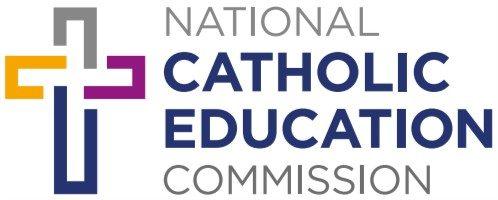Scripture is central to the life of the Church and is the driving force of Religious Education. It infuses each area of study in Religious Education in order to give an organic presentation of what the Church believes, celebrates, lives and prays.
Sacred Scripture underpins all aspects of the wider religious life of the Catholic school: its prayer, the celebration of the liturgy and sacraments, faith formation, retreats and reflection days, the social justice activities and youth ministry.
All teaching of Scripture must proceed from the principles of Catholic Biblical interpretation articulated in other sections of this website. Religious Education should give students a comprehensive understanding and appreciation of the Bible as a whole and direct engagement specific texts or passages in a manner appropriate to their developmental stage. Students apply the same skills they are developing in literacy and critical thinking to their interpretation of Scriptural texts.
The National Catholic Education Commission’s Framing Paper: Religious Education in Australian Catholic Schools (pages 18-19) identifies a range of features of high-quality Religious Education. While all are relevant to the teaching and learning of Scripture, the following are the most pertinent:
- Scripture is central to Religious Education. It is presented as texts of faith studied in their context, related to students’ experiences and is offered for prayerful reading and as resource for living.
- Effective pedagogy engages and empowers the learner and opens up a sense of mystery, wonder and meaning for the students. It provides freedom to investigate, inquire and use religious imagination to engage in critical reflection and empathetic dialogue with the Catholic tradition, culture and their experience.
- Pedagogy in the early years draw on children’s natural senses of wonder and curiosity, and stimulates learning through story, play and concrete and visual materials.
- The teacher and the teaching give a powerful witness and offer a respectful and inherent invitation to spiritual awareness and faith.
A teacher must engage with vital, interpretive study of the Bible before teaching any text to students. This website models the Three Worlds of the Text as an approach consistent with Catholic Biblical interpretation. It is not the only approach to interpretation of a text but is the one most widely promoted and used in dioceses in Australia. Teachers are invited to work through the Worlds of Text process for themselves and integrate the worlds before planning their teaching. Teacher research needs to rely on credible sources, bearing in mind that many of the first entries on web search are sites that offer fundamentalist interpretations incompatible with Catholic understanding. Likewise, the resultant learning and teaching process can use a Worlds of the Text methodology in order to ensure student agency and interpretation in the study and to avoid literalist readings of Scripture.
The teacher should allow the text to speak first. Both teachers and students are the agents of interpretation. It is essential that students engage directly with the Bible and discover its meaning for themselves.
Teachers using this website may not be responsible for their school’s overall curriculum design which may specify or recommend certain Scripture passages to specific content elaborations or theme-based units of work. Nevertheless, in preparation and planning, teachers can avoid certain pitfalls that work against their students’ direct engagement with and interpretation of Scripture.
Teachers:
- Ensure that the students are working directly with the Biblical text from an approved Catholic edition of the Bible (see below). Avoid using paraphrases in a textbook, digital resource or Bible story book that remove the text from its context.
- Introduce the unit of work and any recommended passage of Scripture in a way that avoids a prescribed meaning before students can discover it for themselves. Otherwise one reduces the passage to the role of validating or proving a predetermined theme and the student is not motivated or able to engage with and interpret it.
- Present a passage in its full context rather than detaching it or isolating single verses or using it solely as a ‘proof text’ for a theme or issue.
- Avoid any implication that a text has a single fixed meaning.
To not do the above is to diminish the learning experience and Biblical literacy of students and to rob the passage of its richness. When a text is released from a predetermined meaning, it “invites students to ponder what the text was, and is, trying to say; how it connects to their own lives, how it responds to questions of their own design and how it stimulates an understanding of what faith means for people today” (Carswell, 2018, p. 220). The topic theme is not lost: the student enquiry and engagement precede any explicit teaching input on the Church’s interpretations of the text or its relevance to the topic.
The insights gleaned from the study and interpretation of the Bible should be incorporated into classroom prayer and into other expressions of the religious life of the school.
The study of the Bible in Religious Education, though rigorous and appropriately academic, is always more than a ‘text’. In the world in front of the text and throughout the learning process the teacher and the student can be grasped by the Word of God. There is a range of the faith affiliations and dispositions in any classroom, but all can find meaning in Scripture. It is never detached from the faith it expresses, the tradition that formed it, the Church that believes, celebrates, lives and prays it, and its capacity to transform the student, irrespective of the student’s predispositions and prior knowledge.
Scripture is a resource for prayer within the classroom and in the wider life of the students. The insights gleaned from the study and interpretation of the Bible can be incorporated into classroom prayer and into other expressions of the religious life of the school.
As the driving force of Religious Education, student engagement with Scripture has the capacity more than any other dimension to be “a source of wisdom, a stimulus to lifelong learning, a means of personal transformation and all call to missionary discipleship” (Framing Paper: Religious Education in Australian Catholic Schools, p5).
Catholic editions of the Bible
See Catholic Teaching on Sacred Scripture: The Canon of Scripture
Bibles will indicate whether they include the additional books recognised by Catholics (called Deuterocanonical / apocrypha books) or will use the sub-title “Catholic edition” or “Catholic Bible”.
Translations of Catholic editions of the Bible vary in the difficulty of language (for example, for children or adults), as well as in the approach to the translation, such as a more strictly ‘word-for-word’ translation or ‘a sense-for-sense’ translation seeking meaning and readability.
Some suitable Bible translations with the additional Catholic books include but are not limited to:
- New Revised Standard Version Catholic Edition (NRSV): A commonly used literal translation, highly regarded by scholars.
- Catholic Youth Bible: The NRSV translation with a range of supporting resources
- Jerusalem Bible / New Jerusalem Bible: A sense-for-sense translation used for the readings during Mass in Australia.
- The New Community Bible (Catholic Edition): A sense-for-sense translation.
- Good News Translation – Today’s English Version (Catholic Study Edition): A looser translation using simpler language.

